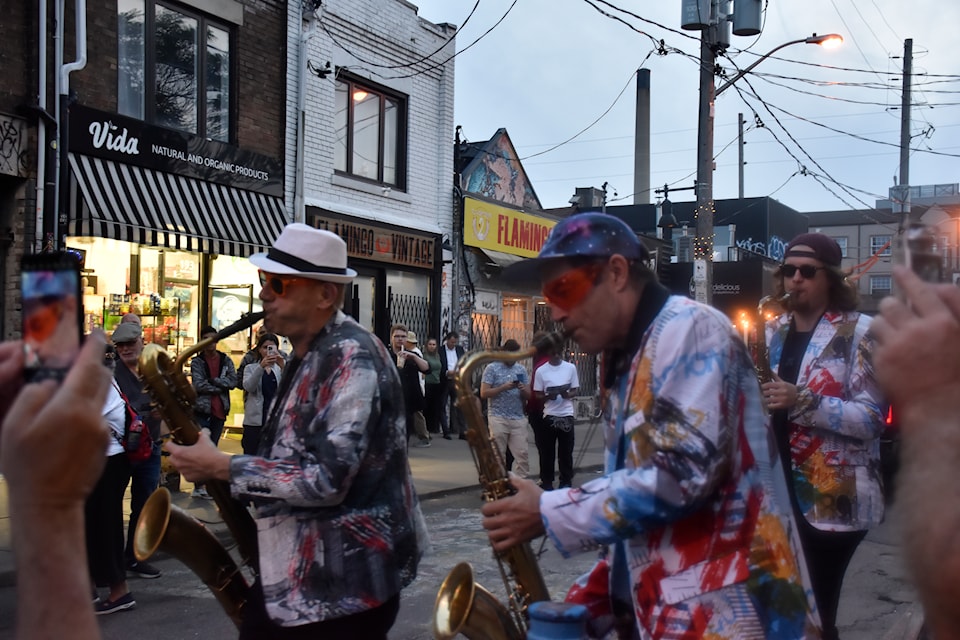Richard Underhill, a Juno award-winning saxophone player who lives in Toronto’s iconic Kensington Market, knows how special jazz music is to the downtown community. He said jazz festivals aren’t just about the music but also about bringing people together.
Festivals help keep jazz alive by creating a space for jazz musicians and bringing in new audiences, he said.
The Kensington Market Jazz Festival is an annual event that founder singer-songwriter Molly Johnson has organized for the past nine years. From last Friday to Sunday, more than 50 Canadian jazz artists showcased their work. The festival was in collaboration with local venues Cafe Pamenar, Supermarket, Tapestry and Tom’s Place. The event had free music in the park and paid music at the collaborating venues.
The event kicked off with Underhill’s group Shuffle Demons and their biggest hit song Spadina Bus. They led attendees to Cafe Pamenar on Augusta Avenue where he later performed with his trio.
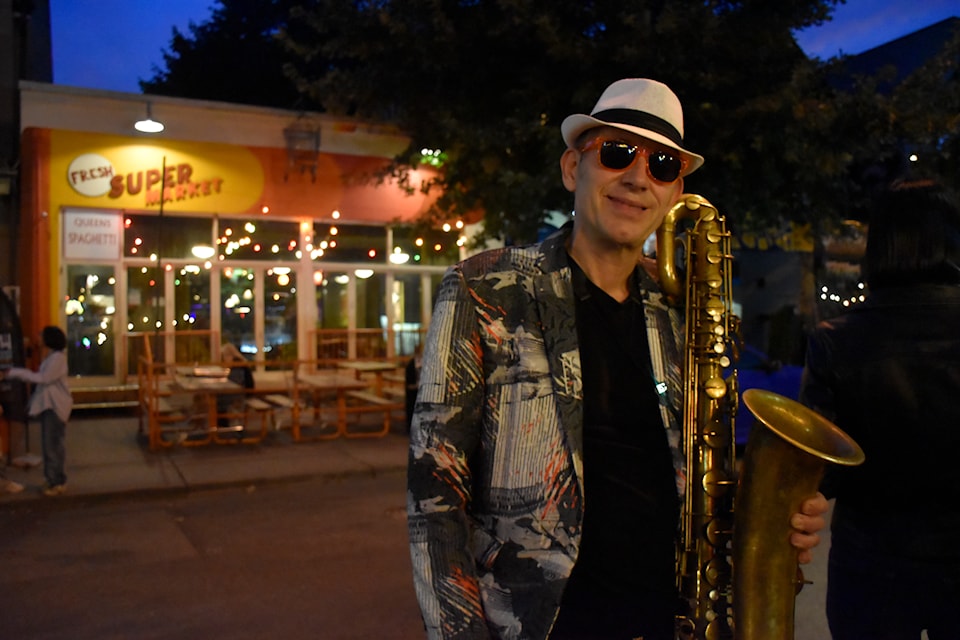
Underhill said the festival unites people from around Toronto and the GTA, including the organizers of a local Toronto restaurant that hosts jazz and Latin music performances for the community.
“I am really excited to play with my trio tonight,” he said. “I love the players. There’s some really wonderful music in the park this year programmed by the people at Lula Lounge so I’m really looking forward to that.”
Hilario Duran, a Humber music professor who is a Juno award winner and a Grammy award nominee, said he was excited to play for people in the neighbourhood and contribute to the feeling of community.
Duran said he advises beginner musicians and students who want to perform in jazz festivals to take all the opportunities they can.
“It’s important for students in the early stages of learning that they start participating in every kind of event. Most of my students are active performers,” he said.
Duran said jazz is shrinking in popularity as other genres rise, but he is grateful that the Kensington Market Jazz Festival has created a space for jazz musicians to thrive.
“I am very happy that the city has given us the opportunity to represent this music,” he said. “The festival supporting the jazz community is really great.”
“These days the music and the style of music is getting lost, but I’m so happy that the city is still supporting jazz,” Duran said.
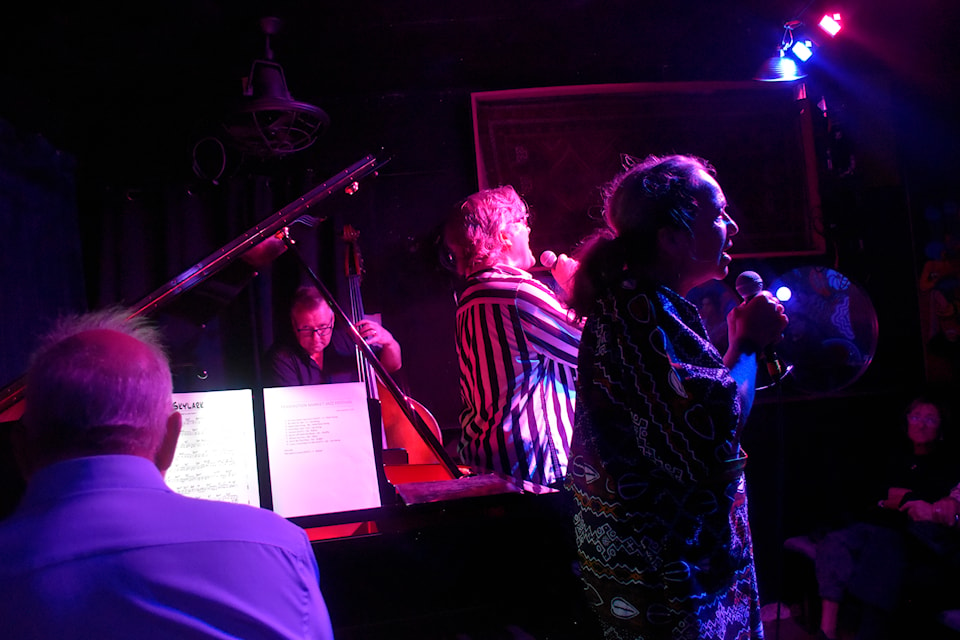
Toronto jazz singer and composer John Alcorn performed alongside Canadian rock and jazz singer Laura Hubert at Tapestry.
“Music festivals are really important and people love them because you get to see a variety of artists,” he said. “One thing that I think is unique about the Kensington Market Jazz Festival is the fact that they focus on just jazz.”
“A lot of other jazz festivals have spread out a lot doing R&B and whatever else and it's all good music but it's not necessarily jazz,” Alcorn said.
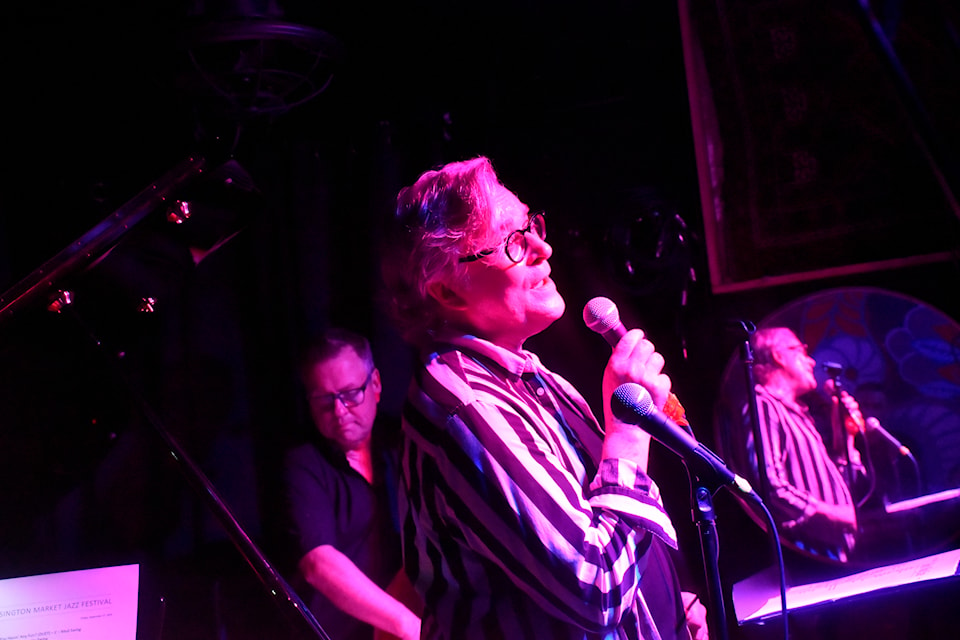
He said the event brings many of his friends and others in the jazz community together.
“Before the music even begins there's this incredible sense of community here in the market. The buzz on the streets feels authentic. It is authentic,” Alcorn said.
“When you have that to start with and then add the music on top of it it’s just an explosion of beauty,” he said.
Following his performance was his long-time friend and collaborator Heather Bambrick, Canada’s National Jazz Award winner for vocalist of the year and a Juno Award nominee. She performed Take the B Train from her 2019 album Fine State.
“I’m really looking forward to what's up next which is my old friend Heather Bambrick who is a killer jazz singer,” Alcorn said. “She’s going to be doing a solo set and then she’s bringing a bunch of other great vocalists with her later.”
Bambrick said the festival is special and the location is unlike any other because the neighbourhood embraces art and culture so openly.
“It’s an artistic area. So they’re open to expanding that artistry and adding music,” she said. “They want to work together as a neighbourhood. There’s no competition. There’s community, which is lovely.”
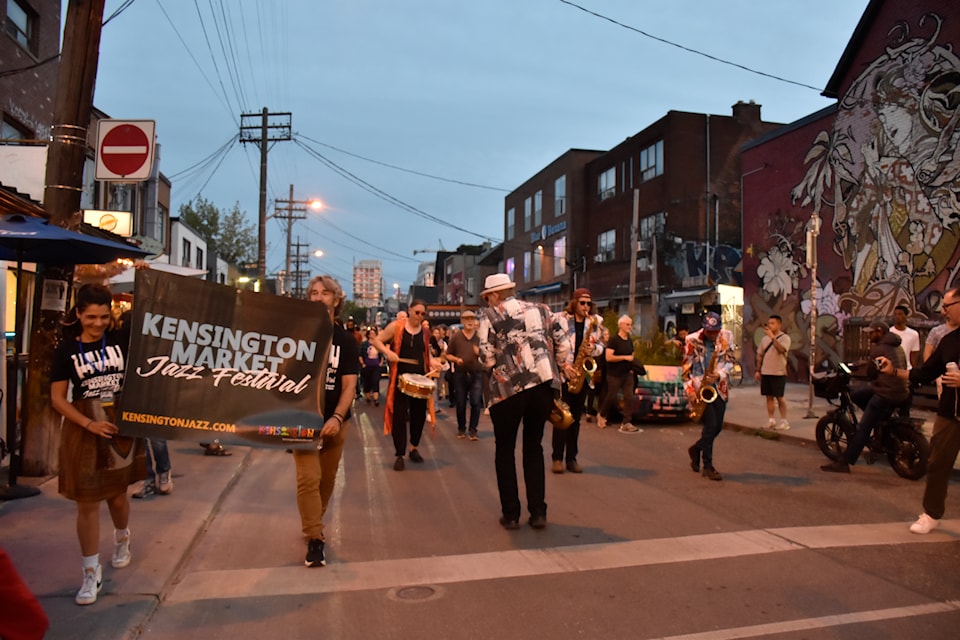
“And I just think it's so unique there’s so many different cultures down here and it’s all in one place,” Bambrick said.
It allows everyone in the neighbourhood to mingle and be introduced to jazz if they haven’t already been.
“Seeing everybody, not only the people that come to see the shows but my fellow musicians because when you’re working, you’re working with your own people,” she said. “You’re not getting a chance to see others. So it’s nice because we're going to see a whole bunch of people that are all in the neighbourhood at the same time.”
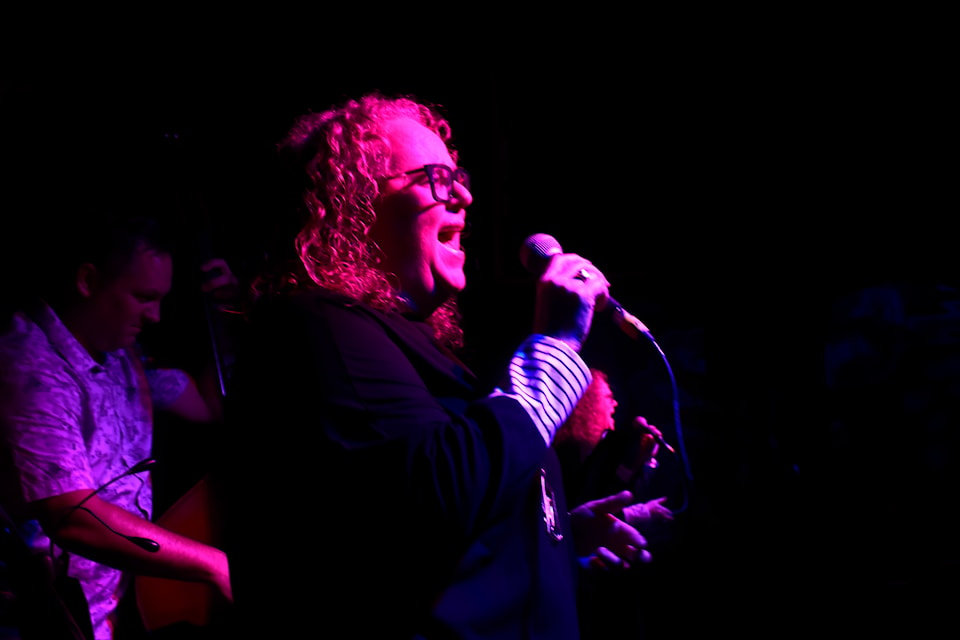
Bambrick said live jazz is the purest form of jazz because people experience the performance and the ability to create spontaneous art first-hand.
“Jazz itself is about live performance. There are great albums, but those albums are just portraits, little pictures and snapshots of what was going on that day in the studios. This music is about spontaneous creation, improvisation,” she said.
“Recreating the music based on what the energy is in the room, or the vibe is that day,” Bambrick said. “I think because jazz festivals are presenting so much live music it’s really the essence of what jazz is all about. It really helps the art form be what it’s meant to be.”
